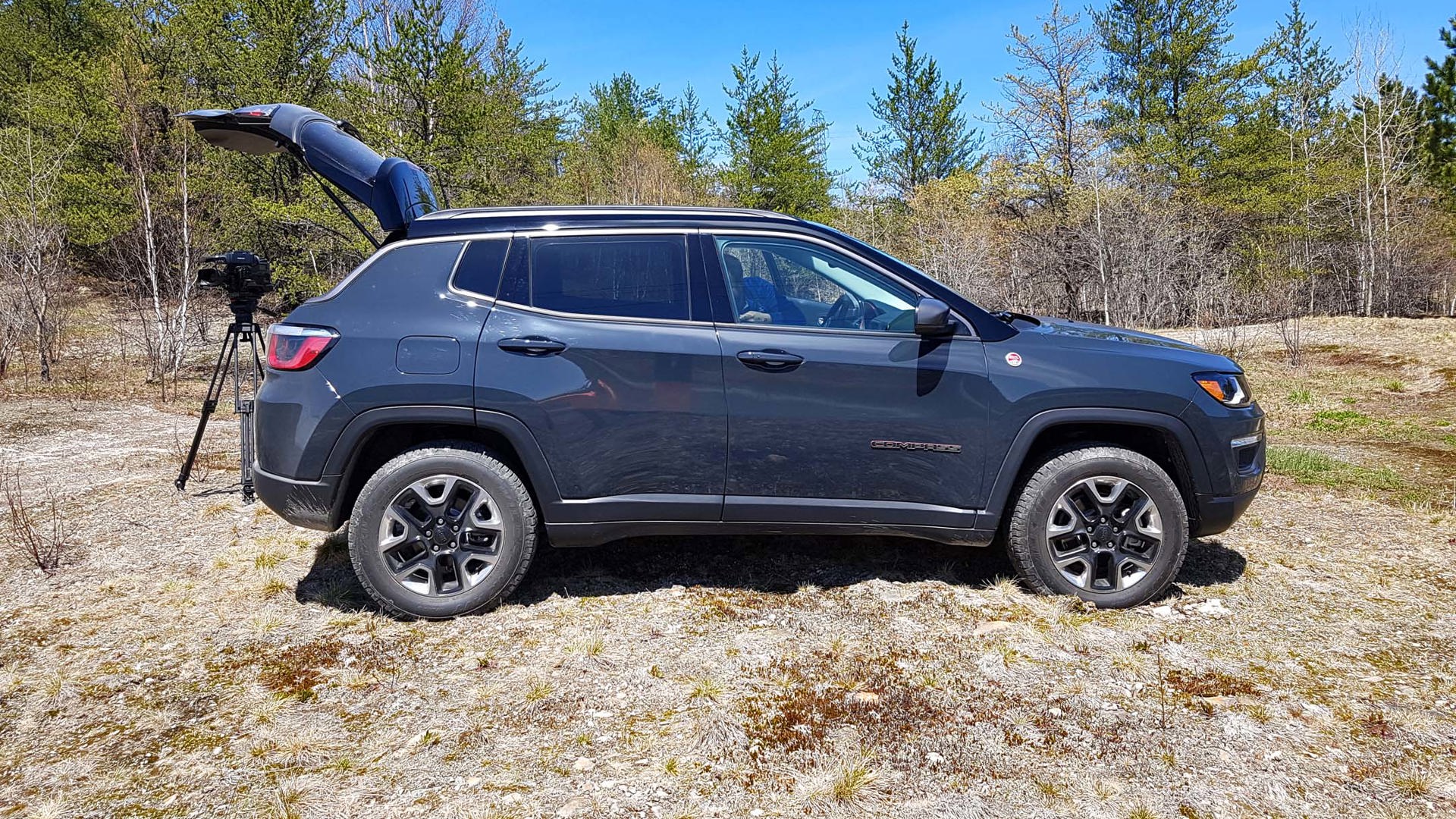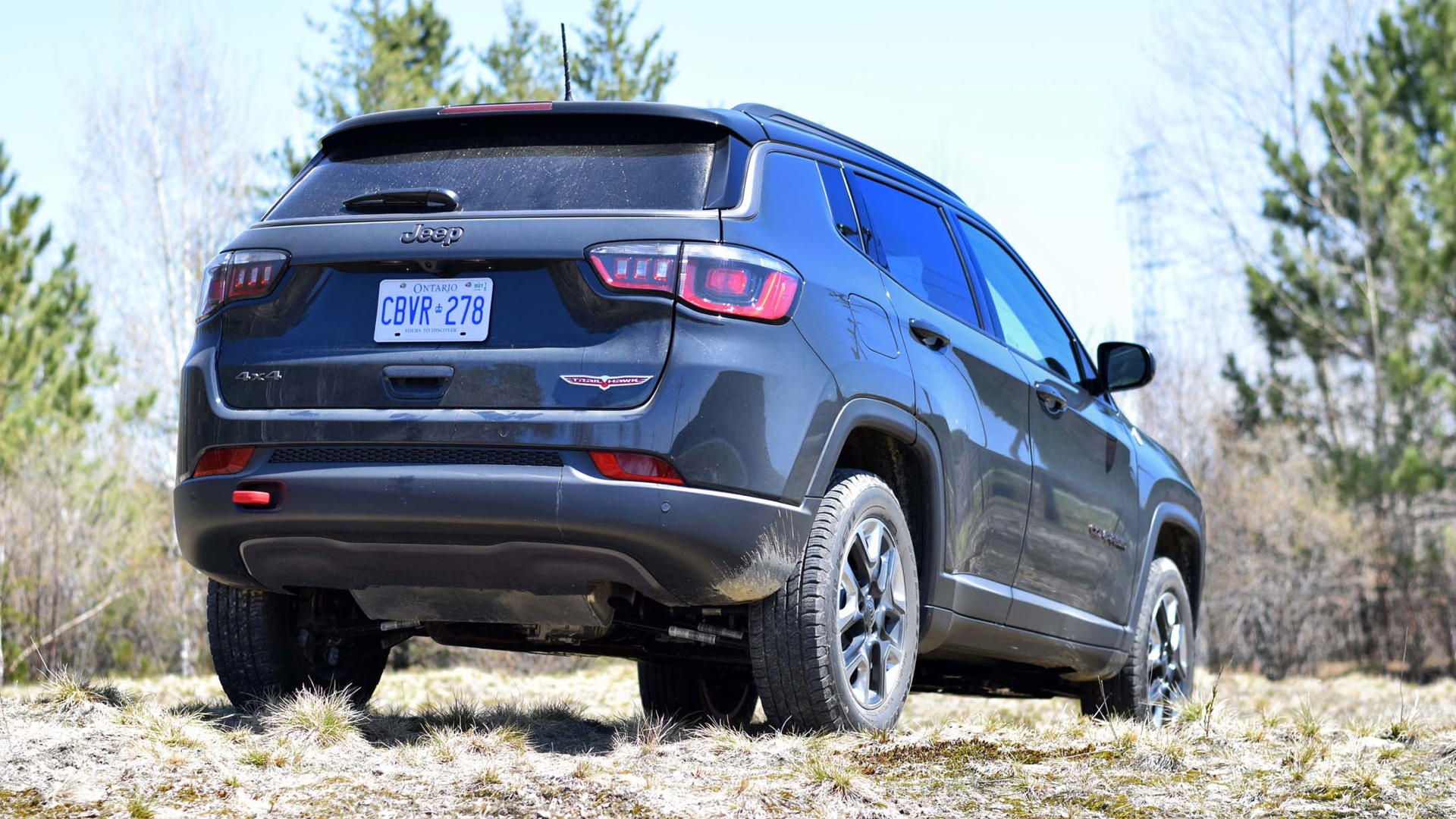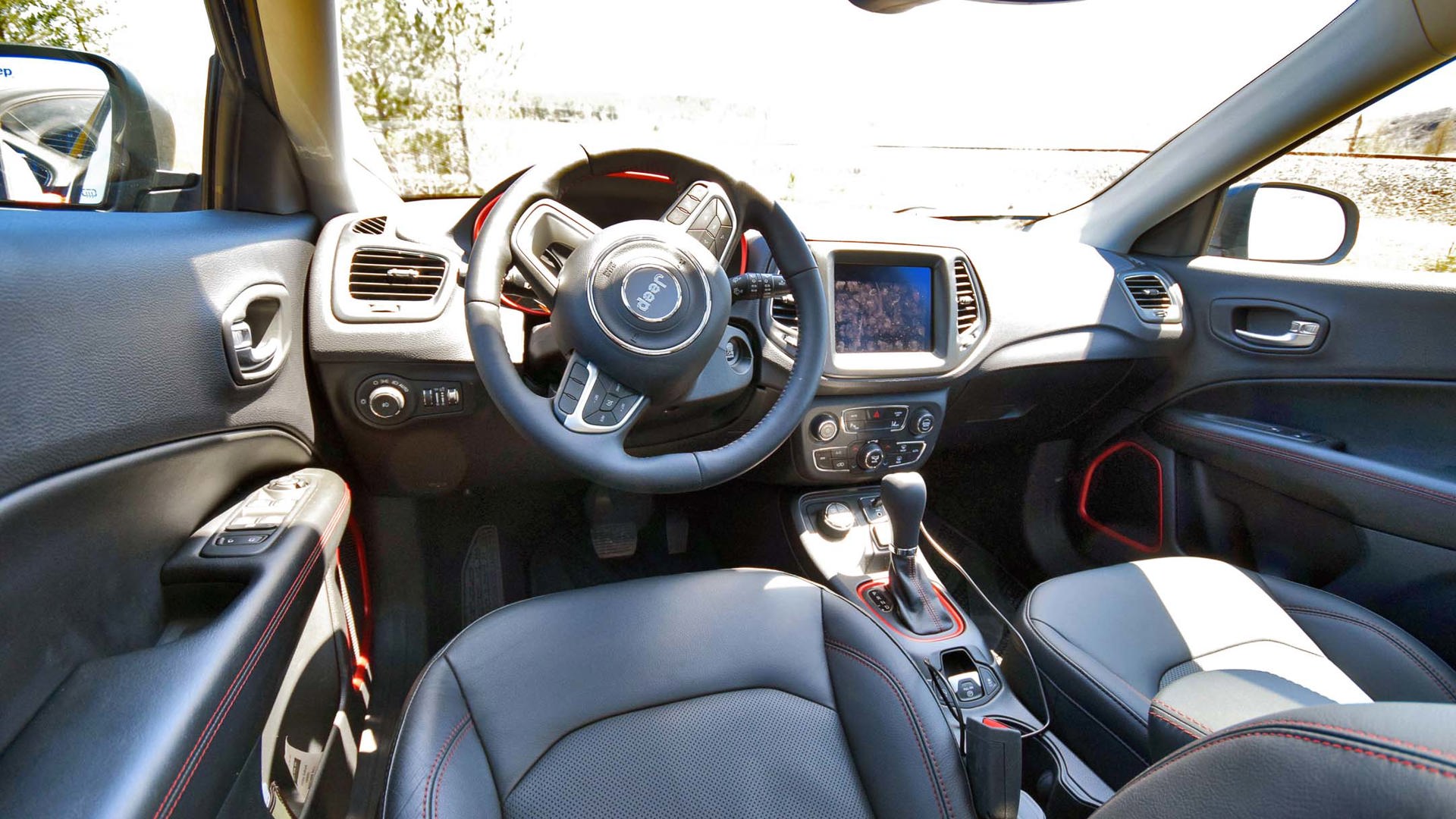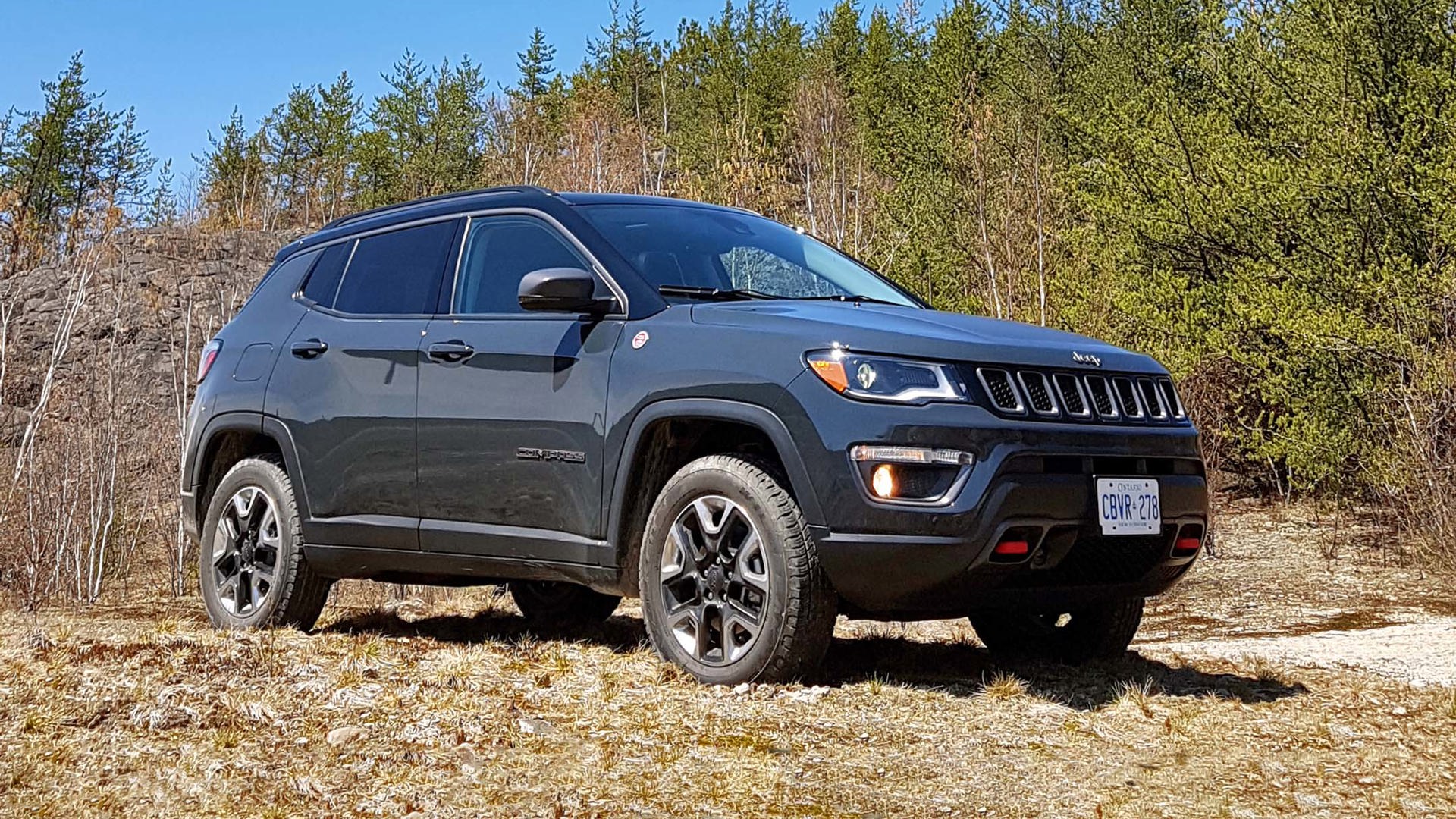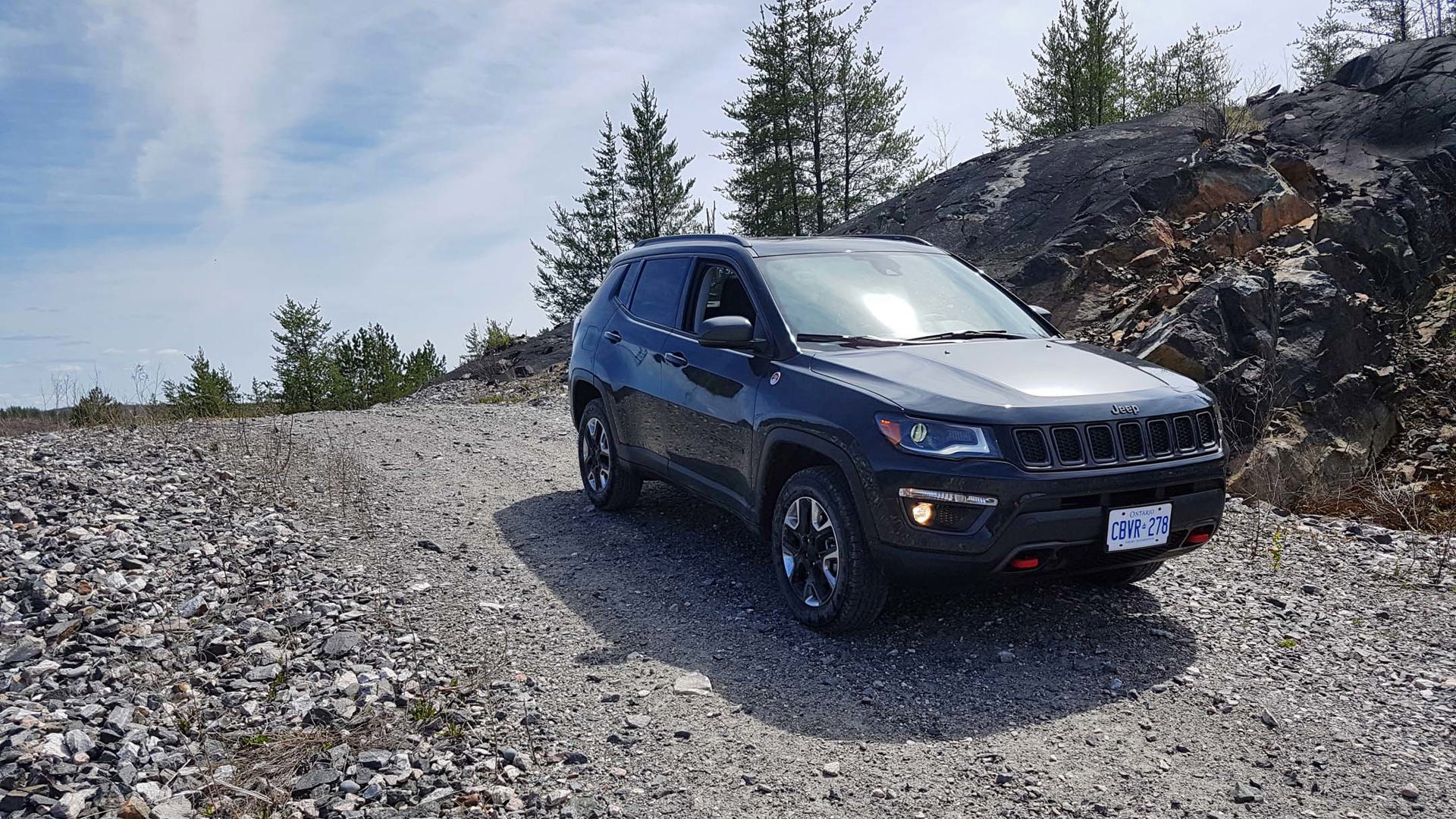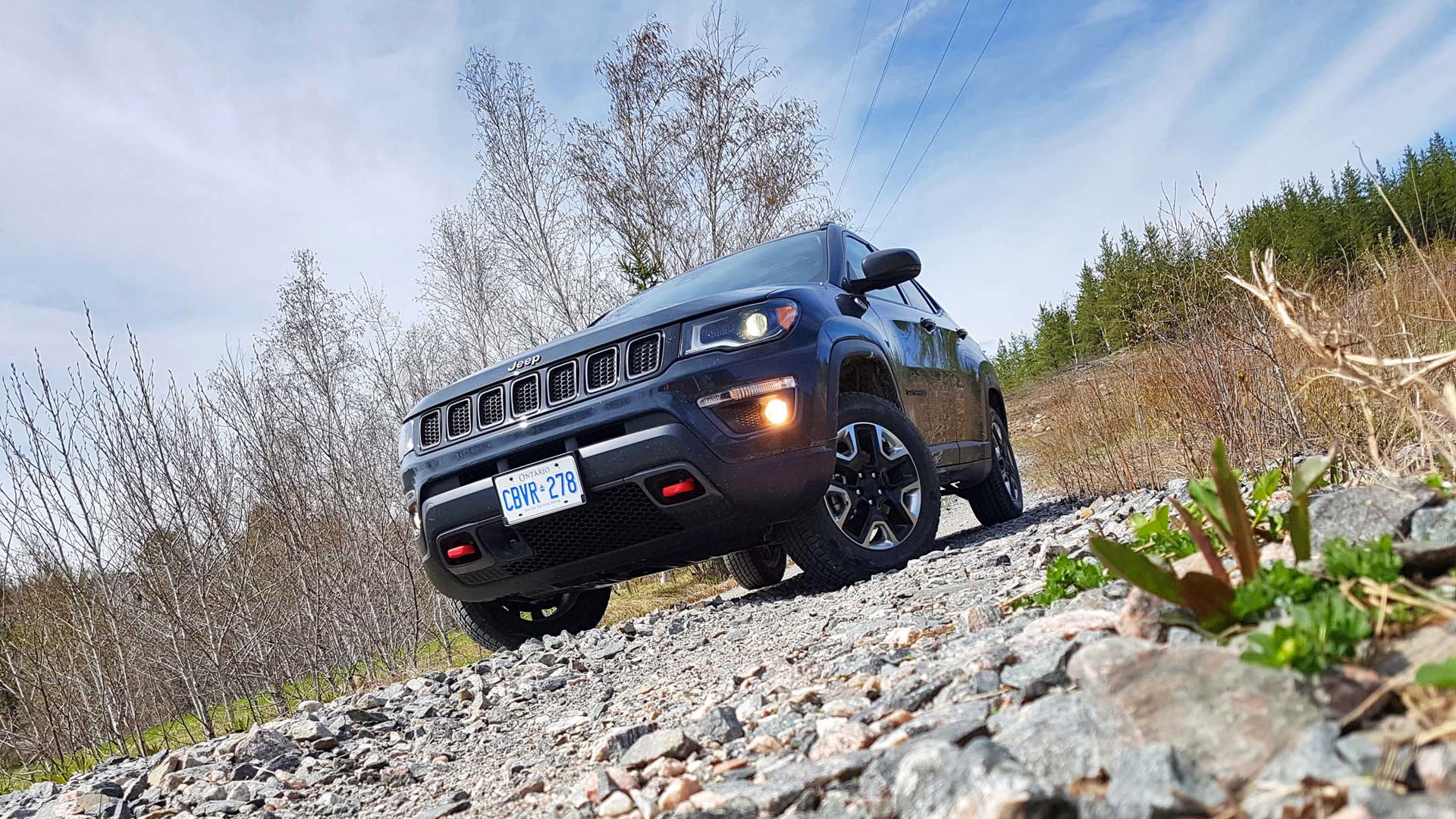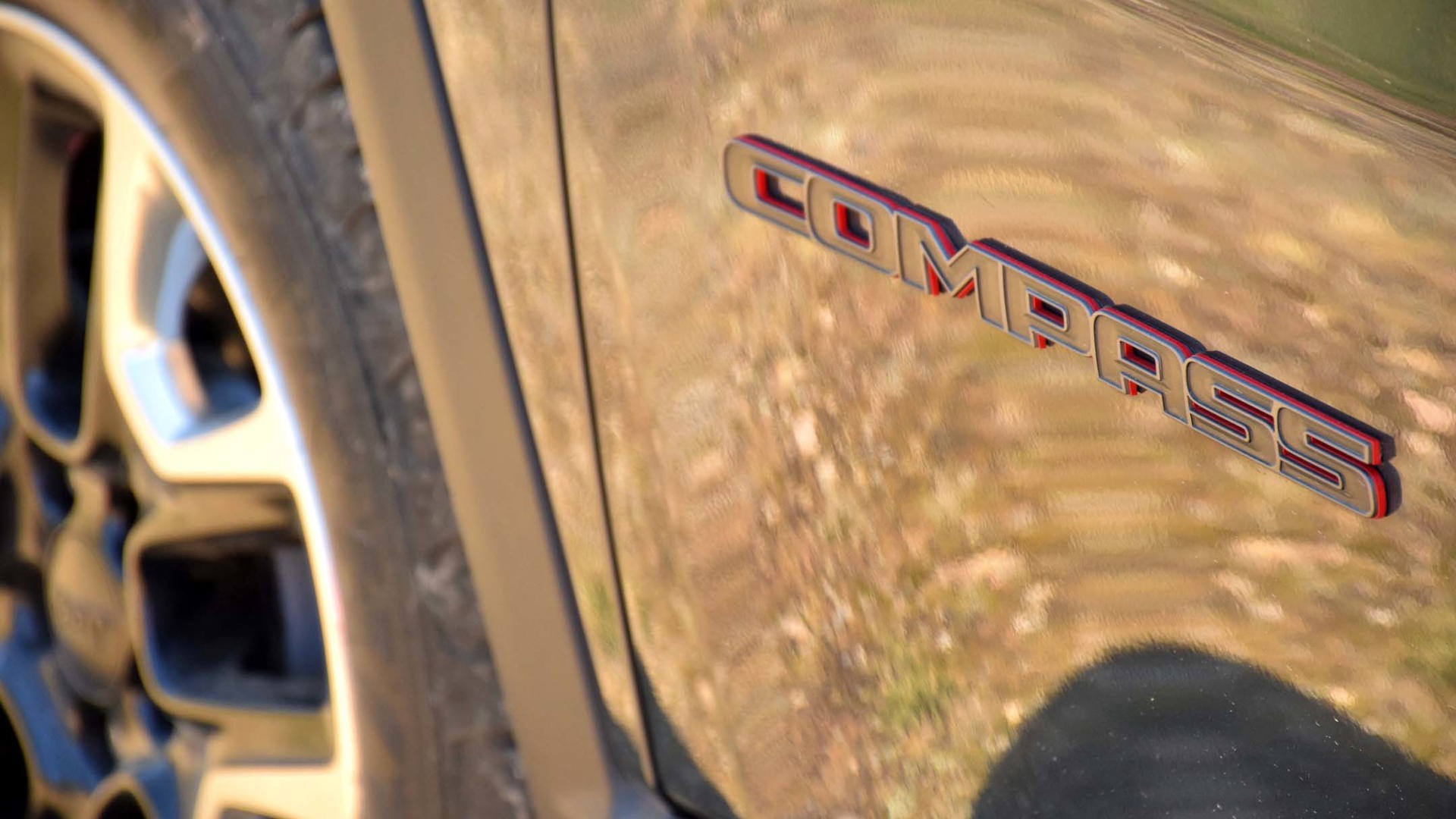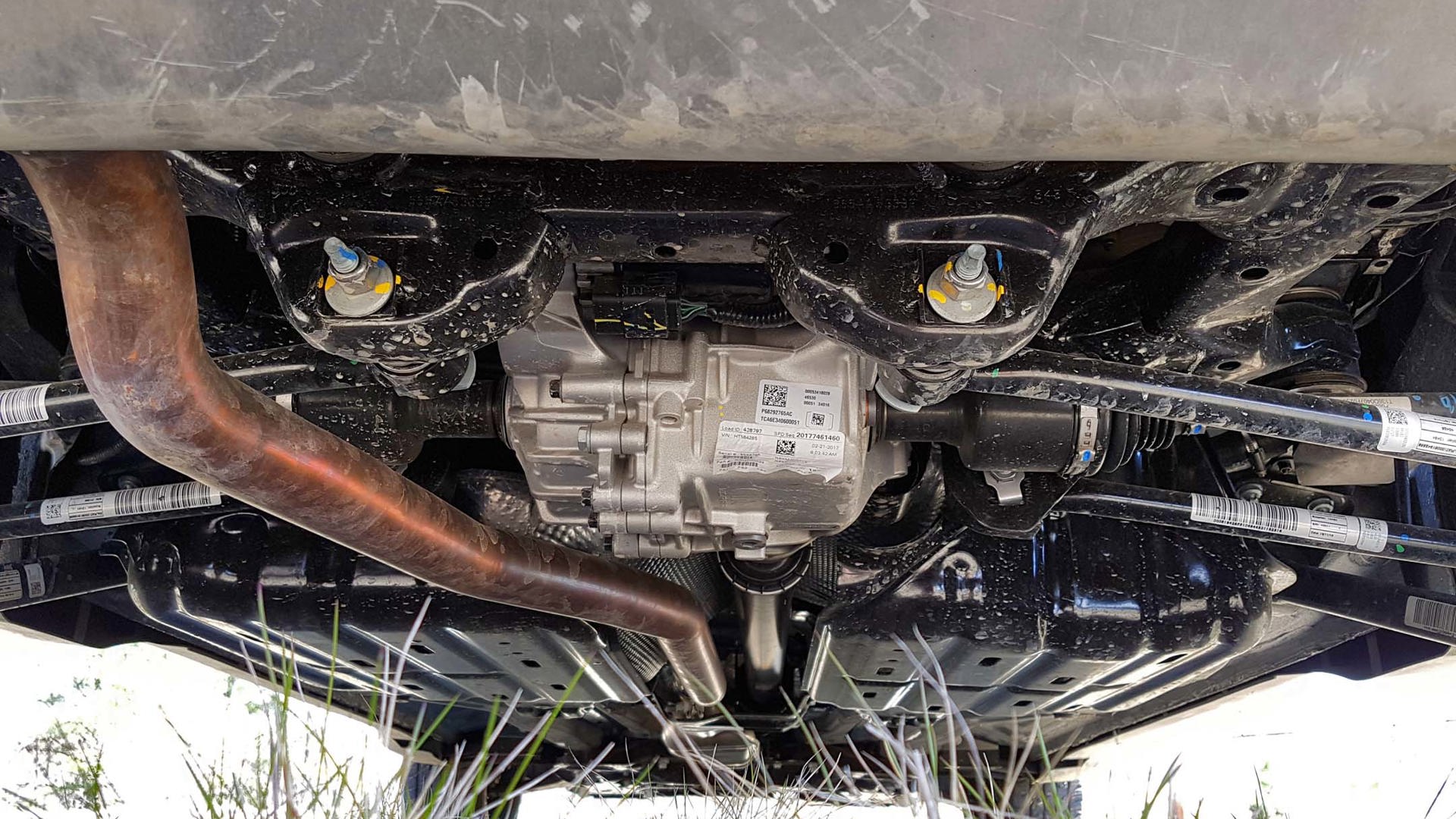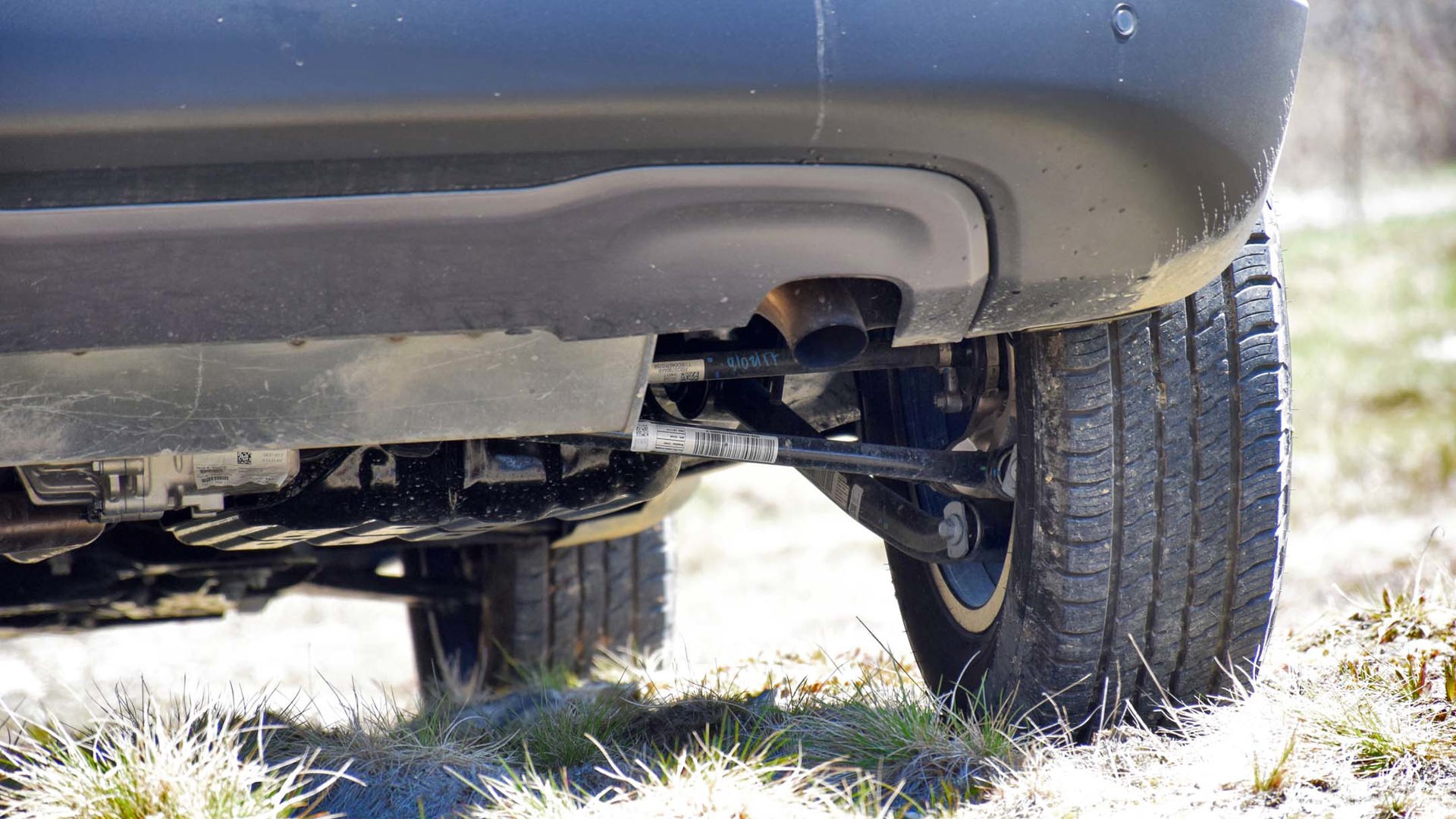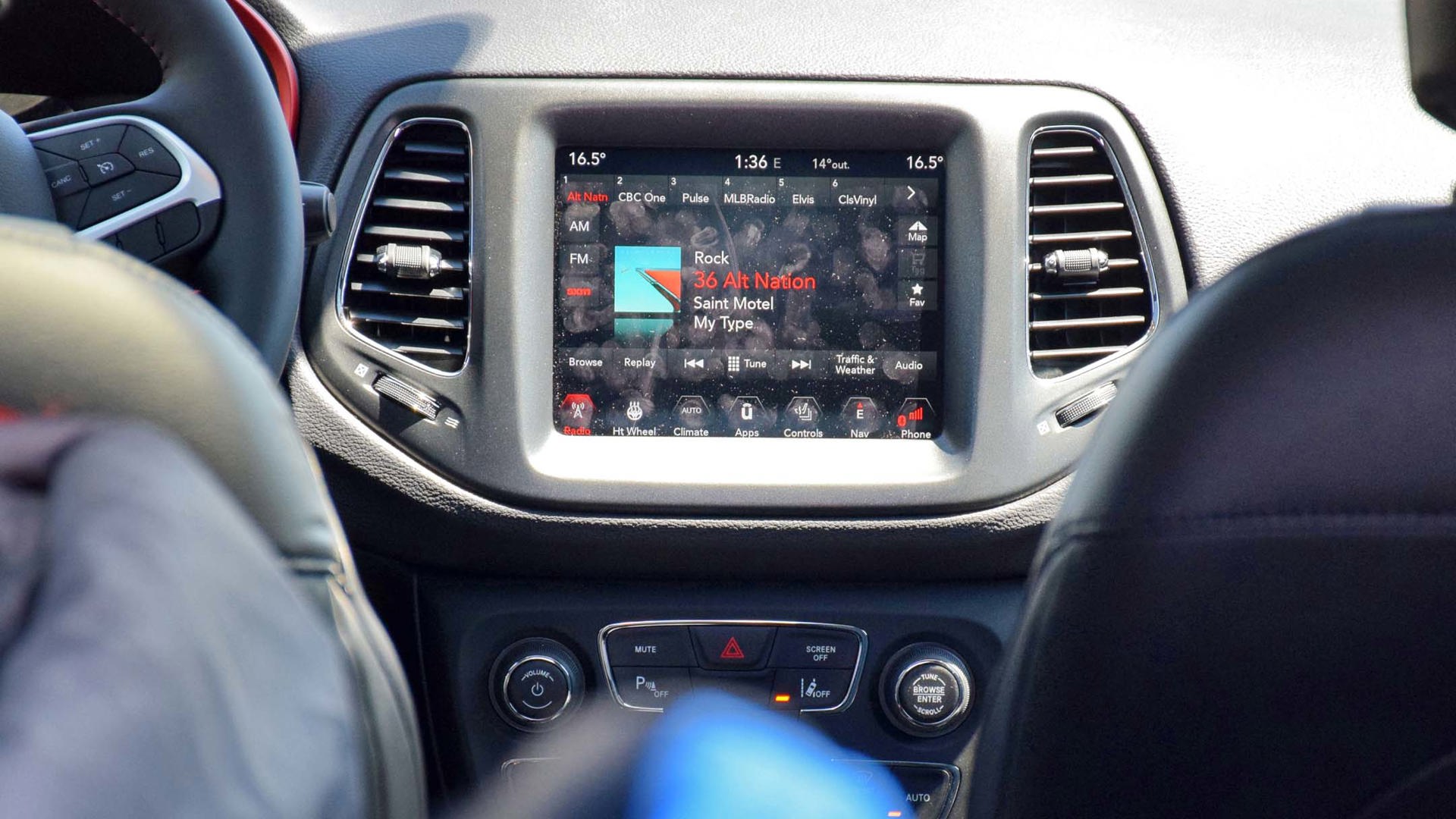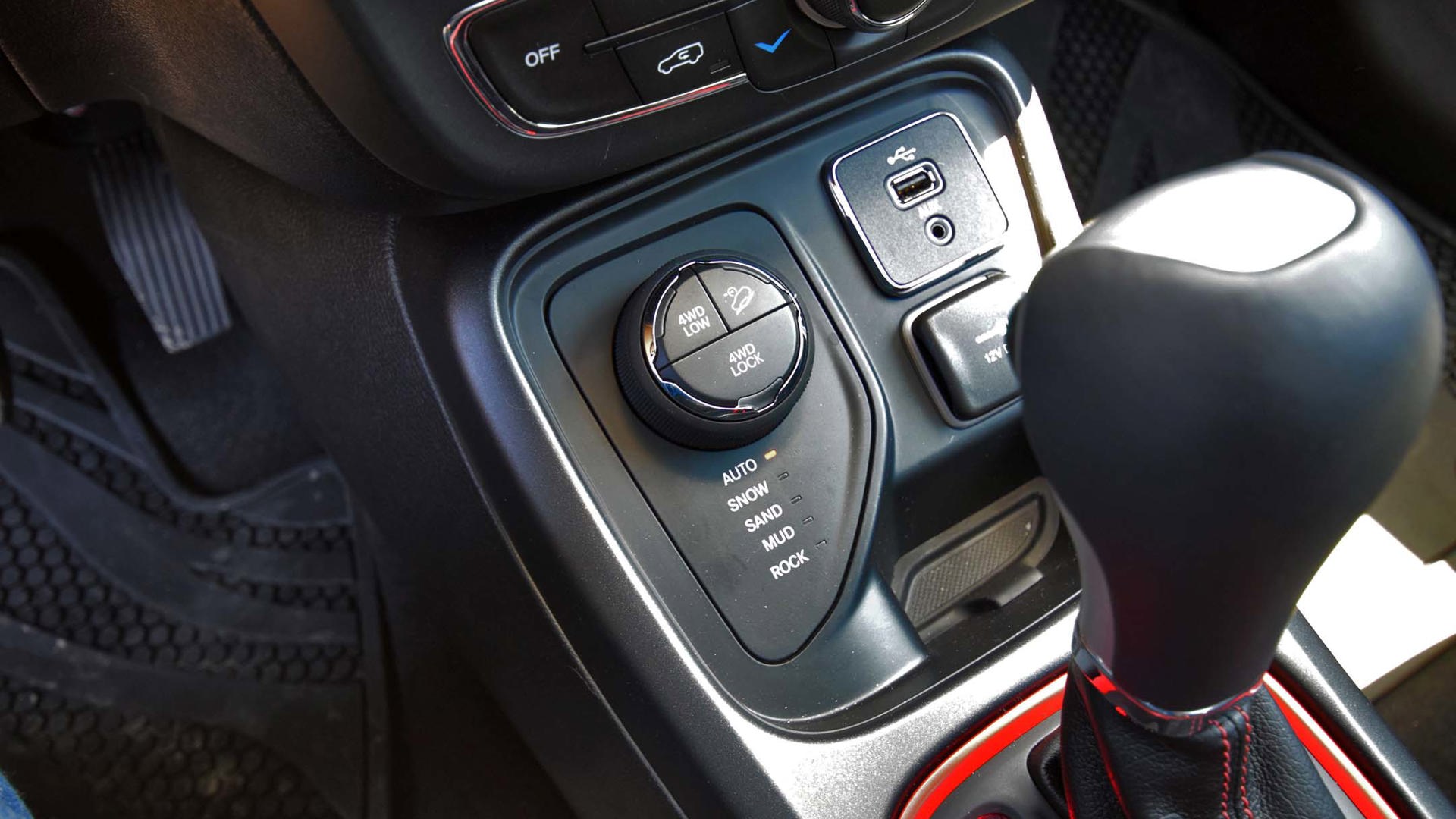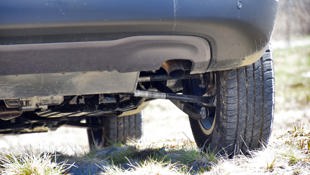 AutoTrader SCORE
AutoTrader SCORE
-
STYLING8/10
-
Safety7/10
-
PRACTICALITY8/10
-
USER-FRIENDLINESS8/10
-
FEATURES8/10
-
POWER7/10
-
COMFORT7/10
-
DRIVING FEEL8/10
-
FUEL ECONOMY9/10
-
VALUE8/10
Like the yucky, dated bathroom or kitchen in a TV renovation program, the Jeep Compass has been gutted to its core, redesigned, and rebuilt as part of a much-anticipated switch into something more modern for 2017.
You definitely won’t lose this one in the Home Depot parking lot.
The marketing pitch is familiar: pick the right trim grade and options, and Compass continues offering small sports-ute flexibility and four-wheel-drive traction in a package priced comparably to a compact car. With 4x4-equipped versions of the Compass coming in from under $27,000, shoppers have, once again, some compelling options for capability, flexibility and traction to spare. For those who plan to hit the dirt, the tested high-capability 2017 Jeep Compass Trailhawk comes in from under $33,000.
Slotted in between the smaller Renegade, and the larger Cherokee, the Compass’s handsome ruggedness is applied with a more conventional and digestible appearance than either of its siblings. It’s a measure more handsome and normal than both, and it looks little like the old Compass, which is swell. Think “baby Grand Cherokee” and you’re in the ballpark. Best of all, you definitely won’t lose this one in the Home Depot parking lot.
The new interior is typical modern Jeep – with numerous elements familiar from the Cherokee and Renegade. Same dark plastics, same blending of modern tidiness and high-tech, and same use of exaggerated chunkiness and depth to the panels, consoles and controls to create a rich and deep environment. The central command system, which was already one of the best in the business, has been updated, buffed up in processing power, and fitted with Android Auto compatibility (Apple CarPlay being already available) for full smartphone integration on its big-ass screen.
Entry and exit are a cinch: just slide over laterally and you’re in your seat, with minimal hopping or plopping. Other than a slightly cramped footwell, I found the driver’s environment to be adequately spacious, and appreciated plenty of at-hand storage nearby. No issues to note with head- or legroom up front, and though rear seats offer more than adequate legroom and width, headroom will quickly vaporize for anyone over about 5'11". Numerous rear-seat passengers, even of the larger variety, commented positively about rear-seat roominess.
The cargo hold is accessed by a motorized tailgate, and includes two small storage cubbies at the rearward corners of the cargo floor to keep smaller items in place. There’s a full-sized spare beneath said cargo hold, which includes some additional room to keep your gear organized and out of sight. When needed, rear seats fold nearly full-flat in a jiff.
The Trailhawk designation nets owners a bevy of upgrades intended for top-line prowess on the road less travelled – with skid plates, a lifted suspension, recovery hooks, aggressive tires, and unique high-clearance bumpers all included. There’s also a 20:1 crawl ratio for the transfer case, and an exclusive “Rock” setting for the SelecTerrain system.
Benefits include added traction, confidence and clearance when tackling surfaces that could damage a comparable Honda CR-V or Chevrolet Equinox. Remember: Trailhawk is not an appearance package – it’s a high-functionality toolkit full of hardware selected for the highest return on investment in the hands of an avid or aspiring off-roader. Of course, that doesn’t stop thousands from plunking down extra cash just for the unique visuals, and the sought-after Trailhwak badge.
On the road less travelled, like other Trailhawk models, drivers can expect to feel backed up fully by a level of hardware, software and capability that’s head and shoulders above average for the segment. You’ve got grip and clearance for days, in the sort of terrain that’d leave a lesser cute-ute with a remodeled floorpan. Of course, the low-range gearing – accessible at a button press – is a big confidence booster when steep grades are in need of tackling. Finally, even over fairly large obstacles, there’s enough clearance that you don’t hear from the floorpan beneath you.
With the SelecTerrain dial encircling a few buttons near the shifter, engaging your currently desired blend of traction, drive mode, and supplemental assist is achieved quickly. Need 4x4 lock and Snow mode? Just click and twist. Hitting some mud? Click into Mud mode in a half-second. Need to inch down a steep hill covered in big-ass rocks? Just a twist and a click engages Rock mode, low range, and Downhill Assist, which crawls the Compass carefully down even the craggiest slopes. This clever little dial makes engaging the right systems easy and foolproof, and even left in Auto, the systems usually call the shots well.
Off-road ride quality is among the best you’ll find in a non-Wrangler Jeep model. Said Wrangler is built on an ultra-tough ladder frame, whereas the Compass (like the Cherokee and Renegade) rides a car-like unibody structure, with a car-like independent suspension system bolted beneath it.
I found the Cherokee and Renegade to feel and sound, to varying degrees, a touch more delicate than I like on a rough trail, though Compass feels a measure more solid and composed than either. You hear from the suspension, but not as often or loudly. This is a good thing – after all, off-roading is more pleasurable when it doesn’t sound like your struts are getting kicked around like they’re about to be ejected from a United flight. Cabin noise levels, in general, are a touch quieter on rougher surfaces too, and the Compass feels a few ticks more durable than its siblings, which inspires confidence.
Ditto the steering system. At low speeds, it’s light and effortless, making it easy to fling, maneuver and place the Compass where you’d like, with little physical effort. Moreover, the steering transmits little harshness from surface back to the driver’s fingertips, improving comfort. Most importantly, the steering is isolated admirably – even the most severe ruts, bumps, moguls and rocks fail to pull or yank the steering around in the driver’s hands. You’re never arguing with the Compass’s steering, and in a challenging off-road setting, this reduces your physical and mental workload, which makes life easier, and is less daunting for a novice off-roader.
The steering works nicely on the highway too. It’s a measure more precise and heavyset at higher speeds than the norm, helping the Compass to navigate twisty highways with more stability than its lifted ride height leads on. Add in the sports-car precise brake pedal feel, and you’ve got a machine that works better than you think on the highway, given how well it works in the rough.
The tester’s 2.4-litre Tigershark MultiAir engine generates 180 horsepower. Even pushed, where many a four-cylinder crossover engine sounds like a stray dumpster cat in heat, the Compass’s mill operates gently, rarely sounds bothered, and makes a pleasing growl. It works almost invisibly at lower revs when you’re driving gently, too.
The nine-speed automatic helps optimize economy and performance, and a deep first gear gets it off the line with snap to spare. Mostly, it picks the right gear at the right time with no second thought, but some drivers will wish for more power, especially when it comes to highway passing.
Other notes? Again, with the bigger screen and numerous improvements building on an already-solid interface, Compass has the best central touchscreen system in the business. The tester’s headlight performance was very good too, with illumination spread, saturation, focus and light colour that wouldn’t look out of place up the road in front of a pricier luxury sedan.
Mileage landed at a better-than-expected 10.6 L/100 km, including plenty of off-road driving and highway cruising at a good clip.
Gripes? The auto stop-start system takes a touch too long to restart the engine at times. Jump on the throttle too quickly in the milliseconds after the engine restarts, and there’s a brief but notable delay before the vehicle gets moving again. Further, wind and road noise levels at speed were slightly higher than expected.
End of the day, Compass Trailhawk works nearly as nicely on-road as its competitors, while blowing their doors off where off-road performance is concerned. Here’s a package that combines many in-demand traits and technologies in the crossover segment today, with a healthy dose of capability and off-road prowess for the sort of shopper who will actually use it in the rough. You can have a lot of fun with this machine, if you use it for what it’s designed for.
| Engine Displacement | 2.4L |
|---|---|
| Engine Cylinders | I4 |
| Peak Horsepower | 180 hp @ 6,400 rpm |
| Peak Torque | 175 lb-ft @ 3,900 rpm |
| Fuel Economy | 10.8/7.8/9.5 L/100 km city/hwy/cmb |
| Cargo Space | 770 L / 1,693 L seats folded |
| Model Tested | 2017 Jeep Compass Trailhawk |
| Base Price | $32,895 |
| A/C Tax | $100 |
| Destination Fee | $1,795 |
| Price as Tested | $37,175 |
|
Optional Equipment
$2,385 – Safety and Security Group $895; Popular Equipment Group $695; Navigation Group $795
|
|

